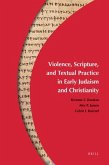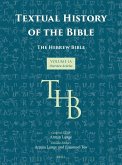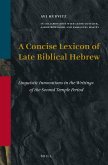This book deals with Biblical Hebrew. Although it also relates to Old Testament interpretation, it is largely linguistic in character and is intended for linguists as well as scholars of Hebrew and Old testament. It discusses syntactic phenomena and correlations in the entire textual corpus of Deuteronomy 1-30 and is intended to contribute to a better insight into the Biblical Hebrew verbal system. A wide variety of grammatical variables, referred to as parameters [e.g. verb form, subject, objects, adjuncts, conjunctions, word order, clause content, clause type], and their categories are examined. In the clauses of Deuteronomy 1-30, co-occurrences and co-occurrence restrictions of categories of different parameters are found. It is taken for granted that the choice of the verb in a clause is influenced by characteristics of preceding and following clauses, especially the verb forms found in them. In order partly to account for these phenomena, connections have been made between clauses and their verb forms. This result in a consecutio temporum, the sequence of verb forms in a text. Not only qualitative aspects of parameters and their categories are important, but also their quantitative proportions in Deuteronomy 1-30. Patterns are deduced from the frequencies of parameter categories and of their relationships. The frequency tables are grouped together in the supplement separate to the book. In some tables, the categories of each parameter are listed with their freqencies and percentages. The other tables show the joint distribution of two parameters and their catagories.
Hinweis: Dieser Artikel kann nur an eine deutsche Lieferadresse ausgeliefert werden.
Hinweis: Dieser Artikel kann nur an eine deutsche Lieferadresse ausgeliefert werden.








